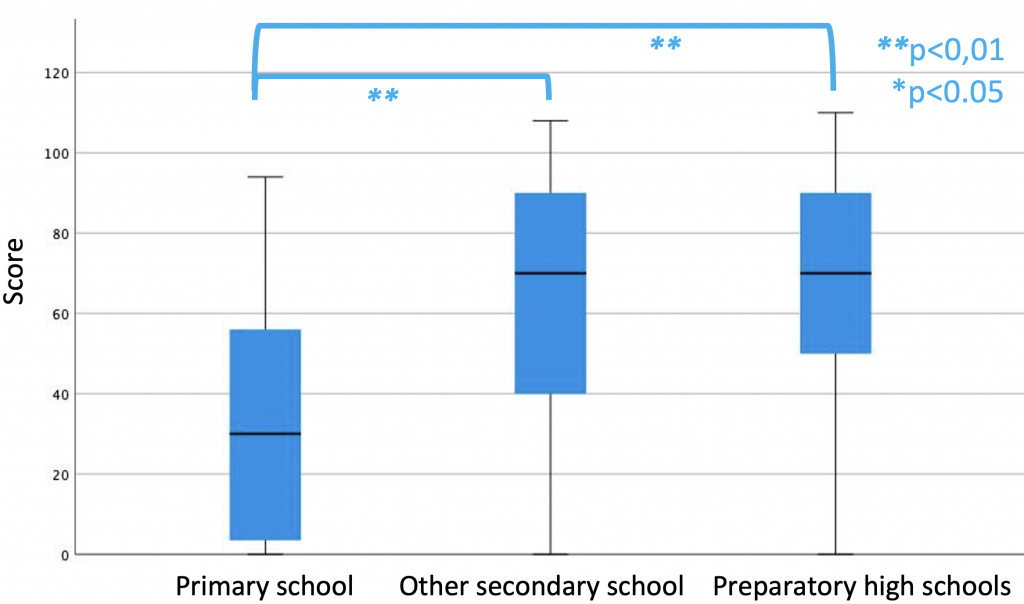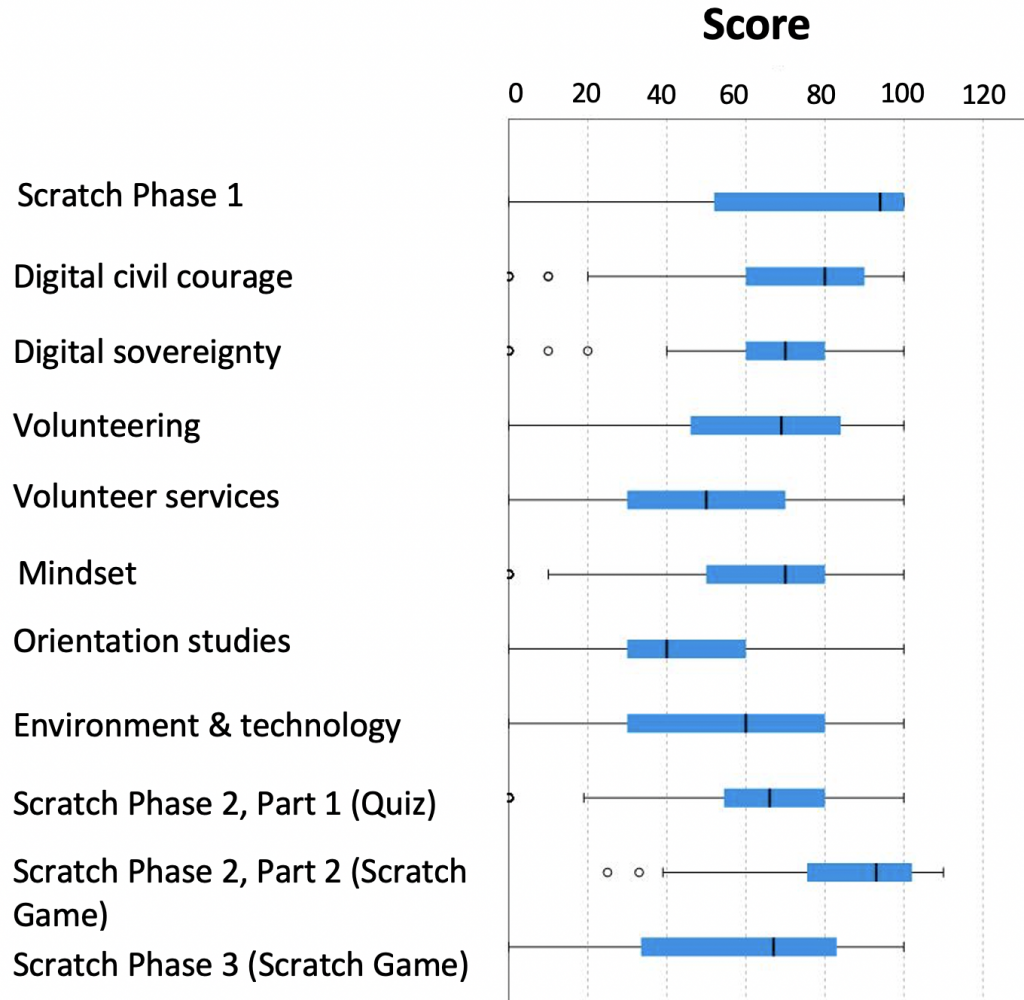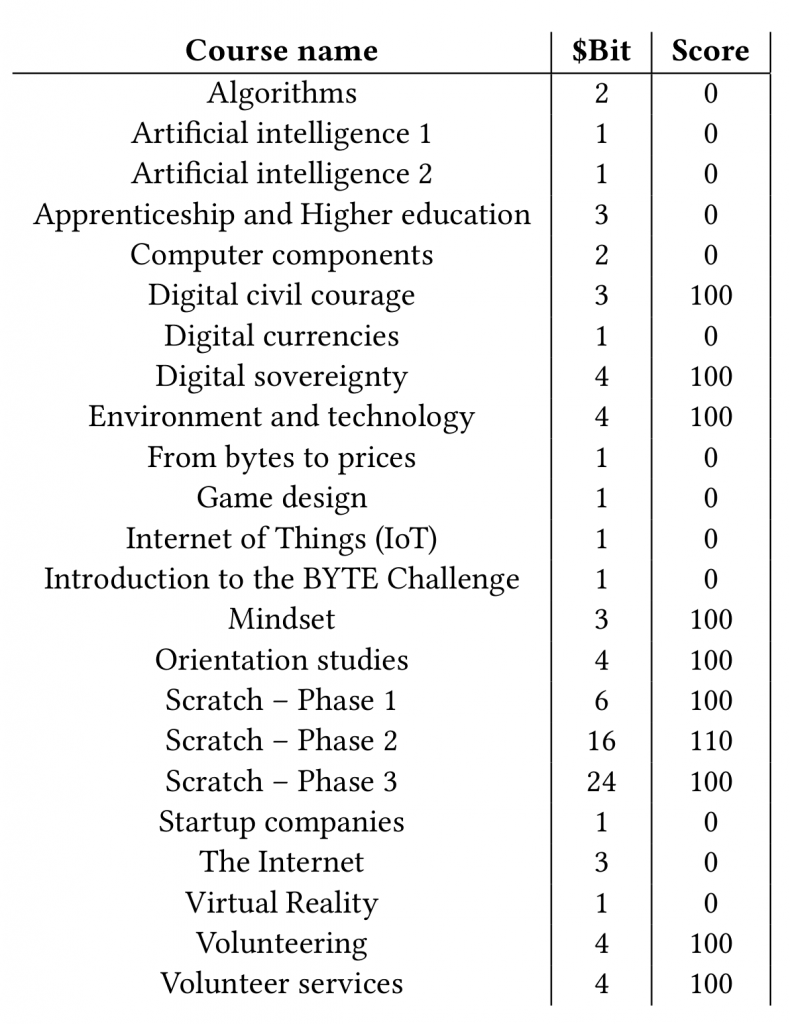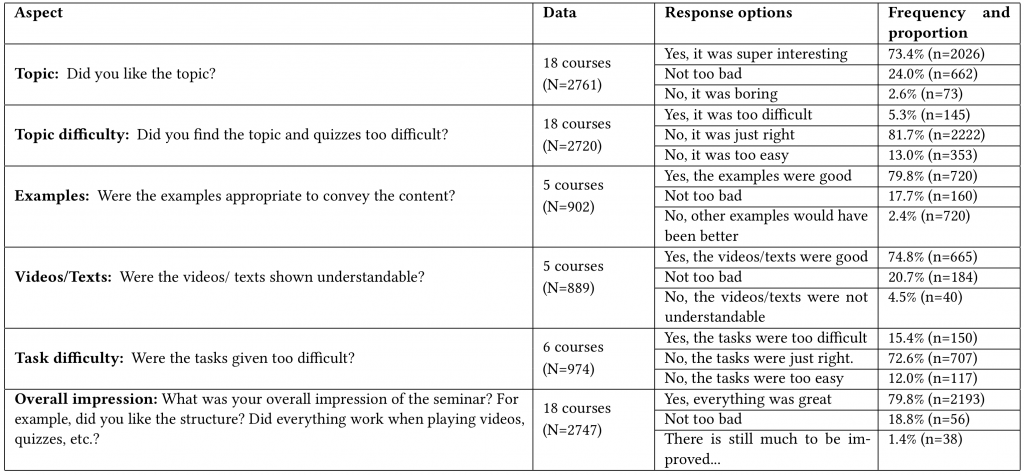
To assess the impact of BYTE, we evaluated the statistical data from BYTE’21 according to scientific standards with psychological methods and based on didactical research results. Here, we present our findings.
BYTE provides much-needed support for teaching foundational computer science and STEM skills. It is equally well suited for grades 6-13 in preparatory high school as in other types of schools.
The level is appropriate for beginners, even with no previous knowledge.
Prior Scratch experience is not required for successful participation.

Feedback from BYTE Users
Feedback from Teachers
We received feedback from participating teachers through digital meetings for several topics.
The biggest mentioned challenges for participation were technical equipment and basic digital skills, as reported mainly by teachers from schools other than preparatory high schools. They reported that there was hardly any digital knowledge available, with deficits among the teaching staff in some cases.
Difficulties were mentioned primarily in the areas of e-mail, file, and account management.
Although there were no statistical differences between results from preparatory high school and other secondary school students, preparatory high school teachers felt that some of the BYTE Challenge content was not challenging enough, while teachers from other types of schools said that the level was appropriate or sometimes too challenging.
In all types of schools, the group registration of classes or courses by teachers is very much in demand and often linked to the desire to integrate them into lessons.
Overall, the feedback towards the BYTE Challenge is positive.



Our observations
Very time-consuming tasks were completed less. However, the
students who completed these tasks achieved impressive results.
Our video formats were better understood and preferred than
text-picture combinations.
Results of the participants
The progress is strongly left-skewed (skew=-5.78, kurtosis=32.49). This suggests that most students do well with our courses.
Across all scored courses, the results varied between 0 and 110 points, with a mean of M=63.37 (SE=0.67). The distribution of the scores was platykurtic and left-skewed (kurtosis=-0.55, skew=-0.70).
Significant differences between participants found with high effect sizes (F(548, 1636)=2.37, p<0.01, 𝜂 2 =0.44) indicate that our courses are well suited to reflect performance differences between students.
A Games-Howell post hoc test revealed that only primary school students (M=35.74) scored significantly (p<0.05) lower than students from other school types.
Scores did not differ significantly between preparatory high school (M=64.93) and other secondary school (M=62.01) students (p=0.08, 2.93, 95%-CI[-0.27, 6.12]). This suggests that the BYTE Challenge can be administered equally well at preparatory high schools and other secondary schools.

Feedback from the participants
After each course, participants could provide feedback. The vast majority of students were satisfied with the courses overall (79.8%, n=2193). Only a small number of participants saw a clear need for improvement (1.4%, n=38).
Most students liked our content (73.4%, n=2026) and found the difficulty of the topics and assignments appropriate (81.7%, n=2222 and 72.6%, n=707, respectively).
Courses 1 and 2 on artificial intelligence were particularly popular topics (87.8%, n=159 and 88.5%, n=123, respectively).
Based on the feedback, we are teaching more content on artificial intelligence in 2022 and adjusted the difficulty of the courses on digital currencies and the internet.


